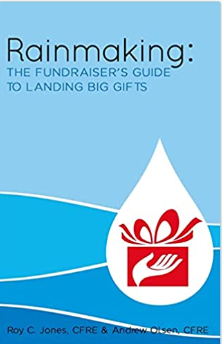Every fundraising program should begin with where it ends… that’s right, where does the relationship end with your donors and supporters.
The first question every development professional must ask is how many donors who gave last year have not given this year? In other words, how many supporters have lapsed?
If you want to grow as a charity you have to know how many new donors you have to acquire in order to replace those that have lapsed. Remember, replacing the “lapsed” is only staying the same size as you were last year. Once you have replaced the lapsed by either renewing the lapsed donors or acquiring enough new donors to replace the one’s you’ve lost, now you can begin to think about how to grow as an organization.
I am always surprised by the number of charities who say they want to grow, but they cannot answer the following questions:
1) how many lapsed donors do you have this year;
2) how many lapsed donors have you reacquired this year;
3) how many new donors have your acquired this year.
Then and only then can you look at the real metrics of growth which begins with your CTAD (Net Cost to Acquire a Donor). As the name implies CATD is the net cost you paid (lost) to acquire a new donor. In order to get to this number you first have to subtract your total acquisition cost from your total acquisition gross income. This is your net income. Next you must divide your net income by the number of new donors you have acquired. This is your CTAD.
The CTAD is used by good fund development managers to make budget projections, determine organization growth rates and, most importantly, project future income for their charitable cause.
Why don’t we look at an example to make sure we can calculate CTAD:
Let’s say our total gross income for our acquisition direct mail appeal is $91,000 and that our total acquisition costs are $141,500 including postage, list rental, creative, production and mailing. So now we subtract our gross income from our total costs to get the net cost to acquire all of your new donors, ($50,500).
Now, let’s take the gross number of acquisition respondents, in our example we acquired 7,250 new donors, and divide it by the net cost to acquire new donors ($50,500).
($50,000) divided by 7,250 = $6.80 CTAD
By the way, an $6.80 CTAD would be an excellent cost per donor! Many organizations will spend up to $30 or $40 to acquire a new donor. Depending on an organizations average gift size and long term donor value (giving over 5 years) I have seen some charities spend more than $100 to acquire a new donor.
The real question for determining how much a not-for-profit should be spending to acquire a new donor really depends on what the average long term donor value is for each donor. This LTDV will always vary from one organization to the next.
However, let’s say our average donor makes 2.75 gifts a year and the average gift is $20. Each donor therefore gives $55 a year. Every new donor you acquire for ($6.80) is going to give you somewhere in the neighborhood of $270 over the next five years.
Is this a good investment? You bet. All organizations will have their own level or aversion to risk. Some will just draw a line in the sand and say we MUST break even in the acquisition effort. In other words our cost to acquire a donor must be “zero”. Organizations with this high aversion to risk grow at very slow rates and always struggle to acquire enough donors to offset their attrition rate. (Attrition is usually defined as the number of donors who have lapsed to 24 months… That’s right, you have a certain number of donors who decide, for whatever reason, and they cannot give to you any more)
There are other organizations that are willing to spend up to their average gift to acquire a new donor to the organization. So this means after a donor has made their second gift, the organization begins netting money. Still others will arbitrarily pick a dollar amount they are willing to spend. It is usually a fraction or percent of the organizations Long Term Donor Value.
LTDV is determined by subtracting your total income per donor for a five year period from your total cultivation and Acquisition costs per donor for the same period.
Well, now that I have totally confused you discussing Long Term Donor Value…. Just remember this: CTAD = the net cost to acquire a new donor.


